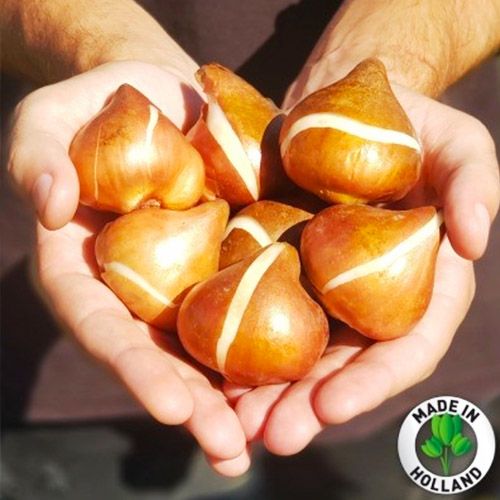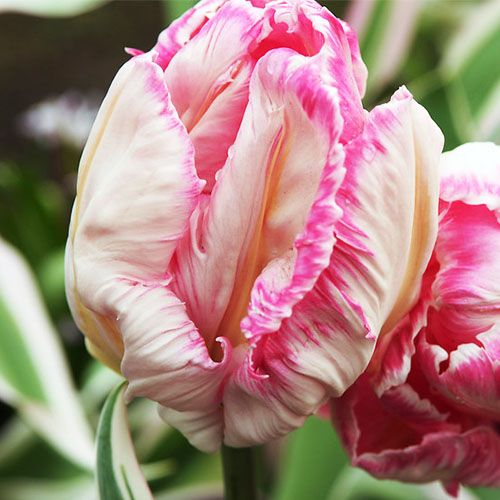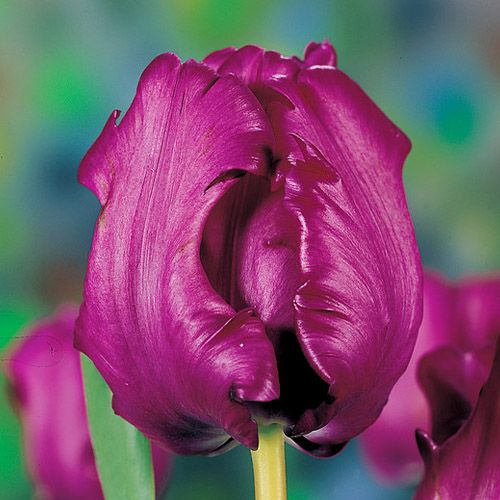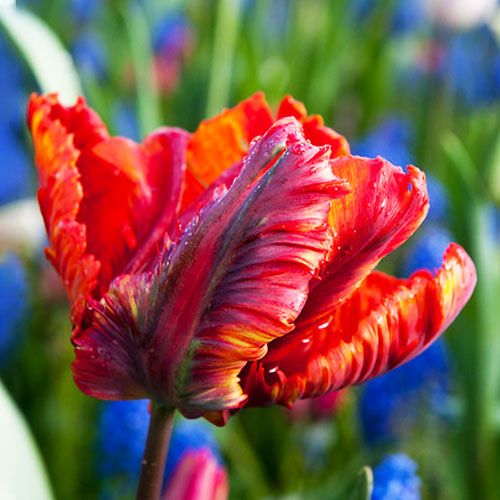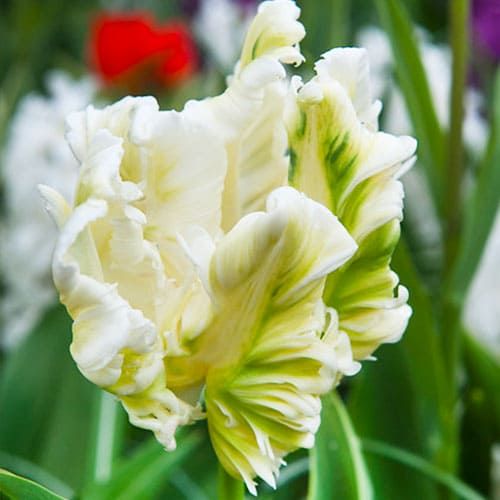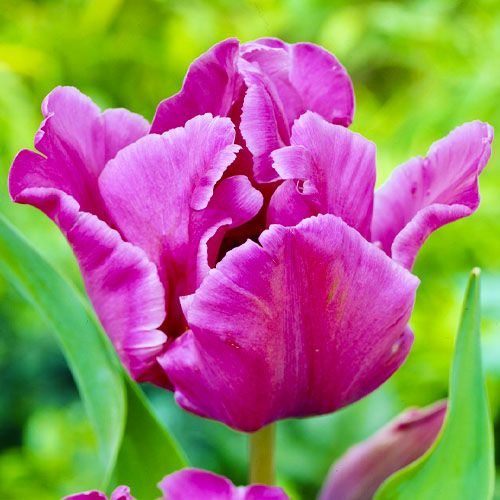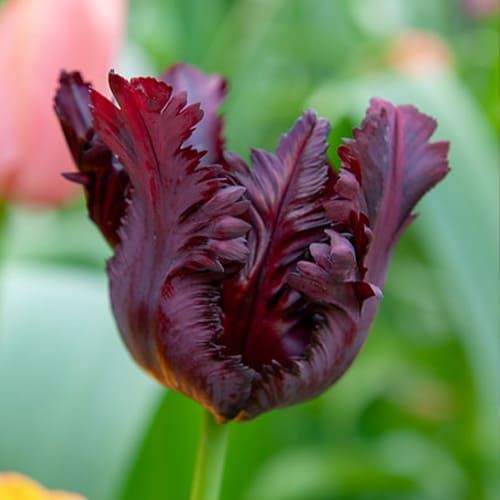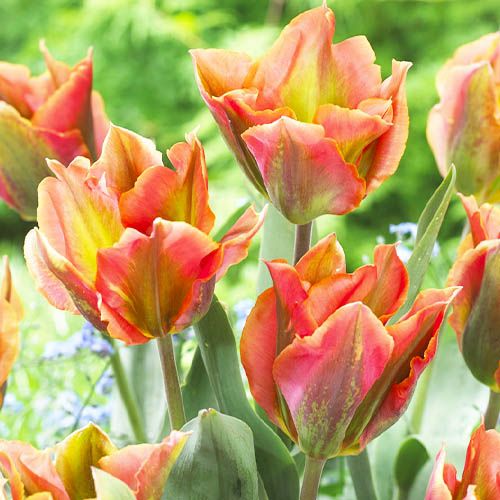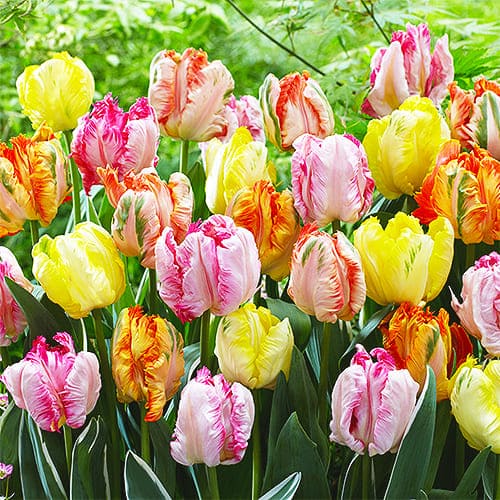
Parrot Tulips
Parrot Tulips
Last Reviews
Discover the Beauty of Parrot Tulips
Consider parrot tulips if you`re seeking for a distinctive and beautiful flower to add to your yard or house. These tulips are not your typical blooms. They feature petals with fringes, ruffles, and twists that mimic parrot feathers. They are available in a range of hues and designs, including solid, striped, pastel, and vivid colors. They are also simple to cultivate and maintain, making them perfect for both novices and specialists. You may read more about what parrot tulips are, as well as their characteristics, advantages, planting advice, and sources of supply, in this post.
What are Parrot Tulips?
Parrot tulips are a type of tulip that belongs to the lily family. They are also known as Rembrandt tulips, because they resemble the paintings of the famous Dutch artist. They are a result of a mutation that occurred in the late 16th century in Europe. The mutation caused the petals to curl and twist in different directions, creating a dramatic and exotic look.
Parrot tulips are not a separate species of tulip, but rather a group of cultivars that share the same characteristics. There are over 100 parrot tulip varieties, each with its own name and color scheme.
Features of Parrot Tulips
The distinguishing characteristics of parrot tulips set them apart from other varieties of tulips. Here are a few examples:
Color Variations
Parrot tulips come in a variety of hues and designs, from plain to striped, pastel to bright. They might be red, pink, purple, yellow, orange, white, or even green. Some of them have contrasting edges or flames that provide drama and intrigue. They may also change color as they develop, providing a dynamic show.
Size and Shape
Tulips with parrots are bigger than most other varieties of tulips. They can grow to be up to 18 inches tall and produce flowers up to 6 inches wide. Their stems are strong enough to sustain the heavy blossoms. Their petals are long and slender, curling and twisting in various ways to create a fringed, ruffled, and twisted look.
Texture and Appearance
The delicate and velvety feel of parrot tulips begs to be touched. Their petals are smooth and shiny on the exterior, but rough and hairy on the inside. Their hues are rich and deep, giving them a luxury and exquisite appearance. They also have a lovely and delicate aroma.
Benefits of Growing Parrot Tulips
Parrot tulips have many benefits that make them worth growing in your garden or home. Here are some of them:
Aesthetics
One of the most gorgeous flowers you can plant is parrot tulips. They have a gorgeous form and color that will capture the attention of anybody. They will provide an exotic and sophisticated touch to your yard or house. They`ll also put on a show when they bloom in the spring, infusing your area with color and aroma.
Durability
Parrot tulips are durable flowers that can withstand various weather conditions. They can tolerate cold temperatures as low as -20°F (-29°C), as long as they are planted deep enough in well-drained soil. They can also survive hot temperatures as high as 90°F (32°C), as long as they are watered regularly and mulched to keep the soil cool. They can also resist wind damage due to their sturdy stems.
Low Maintenance
Parrot tulips are low-maintenance flowers that don`t need much attention or care. They just need to be planted once in the autumn, watered sometimes in the spring, fertilized once a year in early spring, clipped after flowering, and protected from pests and diseases. They will return year after year without fail.
How to Plant Parrot Tulips
Planting parrot tulips is easy and fun. You just need to follow these simple steps:
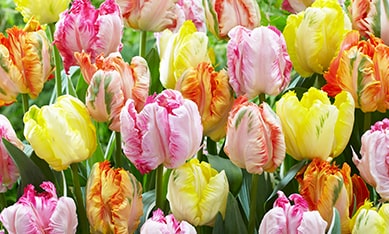
Choosing the Right Spot
Parrot tulips need at least 6 hours of direct sunlight every day. They also need well-drained, organically rich soil. Planting them in moist or clayey soil might lead to rotting or illness. Before planting, add compost or manure to your soil to increase drainage and fertility.
Preparing the Soil
Before planting your parrot tulip bulbs, you need to prepare the soil by loosening it with a fork or spade to a depth of 12 inches (30 cm). You can also mix in some bone meal or bulb fertilizer to provide extra nutrients for your bulbs.
Planting Depth and Spacing
You should plant your parrot tulip bulbs about 6 inches (15 cm) deep and 4 inches (10 cm) apart from each other. You can use a bulb planter or a trowel to dig holes for your bulbs. Make sure to place the bulbs with the pointed end up and the flat end down. Cover them with soil and press firmly.
Care and Maintenance
You won`t need to do anything after planting your parrot tulip bulbs until they bloom in the spring. Here are some pointers on how to look after them:
Watering
Only water your parrot tulips when the soil is dry to the touch. Overwatering or allowing them to sit in wet soil might cause rotting or illness. During hot or dry spells, water them more often.
Fertilization
You should fertilize your parrot tulips once a year in early spring when they start growing new leaves. You can use a balanced fertilizer or one specially formulated for bulbs. Follow the instructions on the label for the amount and frequency of application.
Pruning
You should prune your parrot tulips after they finish blooming by cutting off the faded flowers with scissors or shears. This will prevent them from producing seeds and wasting energy that could be used for next year`s growth. Do not cut off the leaves until they turn yellow or brown, as they need to photosynthesize and store food for the bulbs.
Pest and Disease Control
You should protect your parrot tulips from pests and diseases by inspecting them regularly for signs of damage or infection. Some of the common problems that affect parrot tulips include:
- Aphids: These are small insects that suck the sap from the leaves and stems of your plants. They can cause wilting, curling, yellowing, or distortion of your plants. You can control them by spraying them with insecticidal soap or neem oil.
- Bulb Rot: This is a fungal disease that causes your bulbs to decay or become mushy. It can be caused by poor drainage, overwatering, or planting too deep. You can prevent it by choosing healthy bulbs, planting them in well-drained soil, watering moderately, and removing any infected bulbs.
- Tulip Fire: This is another fungal disease that causes brown spots on the leaves and petals of your plants. It can also cause distortion or deformation of your plants. It can be spread by wind or rain splashes. You can prevent it by choosing resistant varieties, planting them in airy locations, removing any infected plants, and avoiding overhead watering.
Where to Buy Parrot Tulip Bulbs
If you want to grow parrot tulips in your garden or home, you need to buy some quality bulbs from reliable sources. Here are some options:
Online Stores
One of the easiest ways to buy parrot tulip bulbs is online. You can browse through various websites that offer different types of parrot tulip varieties at affordable prices. You can also read reviews from other customers who have bought from them before.
Our store offers a wide selection of different varieties of tulips. You can choose which one you like.
Local Garden Centers
You may also get parrot tulip bulbs from local garden stores or nurseries. You may personally visit them and inspect their items before purchasing them. You may also ask their experts for assistance on how to cultivate and care for your parrot tulips.
Some of the advantages of purchasing from a local garden shop or nursery include:
- You can support your local companies and neighborhood while saving money and time on shipping.
- You may get fresh and healthy bulbs that are climate and soil appropriate.
Conclusion
Parrot tulips are one of the most beautiful and unique flowers you can grow in your garden or home. They have fringed, ruffled, and twisted petals that resemble parrot feathers. They come in a variety of colors and patterns, from solid to striped, from pastel to vibrant. They are also easy to grow and care for, making them ideal for beginners and experts alike.
Parrot tulips will add exoticism and sophistication to your garden or home. They will also create a spectacular show when they bloom in spring, filling your space with color and fragrance. They are truly a sight to behold.
If you`re seeking parrot tulip bulbs for sale, come to our online shop. We provide a large assortment of parrot tulip types to fit your preferences and budget. We also offer rainbow parrot tulip bulbs and spectacular parrot tulip bulbs that will take your breath away with their vibrant colors and patterns. Order today and prepare to be amazed by parrot tulips.
Frequently asked questions about Spring Flowering Parrot Tulips
How can I order Dutch Parrot Tulip bulbs?
You can easily order the Parrot Tulip bulbs via our website. Select the desired quantity and colours and follow the instructions in the ordering process. If you have any questions or difficulties, our customer service will be happy to help you.
Where should parrot tulip bulbs be planted?
Parrot tulip bulbs do best in a sunny to semi-shady location with well-drained soil. Make sure that the soil is well prepared and that there is no waterlogging.
When do the parrot tulips flower?
The flowering time of parrot tulips varies depending on the variety and location. As a rule, they flower in late spring, typically in April to May. The flowers are particularly striking and impressive.
When is the best time to plant parrot tulip bulbs?
The best time to plant parrot tulip bulbs is in late autumn, usually from September to October. This allows the bulbs enough time to become established in the ground before winter.
Can I grow parrot tulip bulbs in pots?
Yes, you can grow parrot tulip bulbs in pots or containers. Make sure the container has enough drainage holes and use good quality potting soil. Make sure you have enough space for the bulbs to grow.











